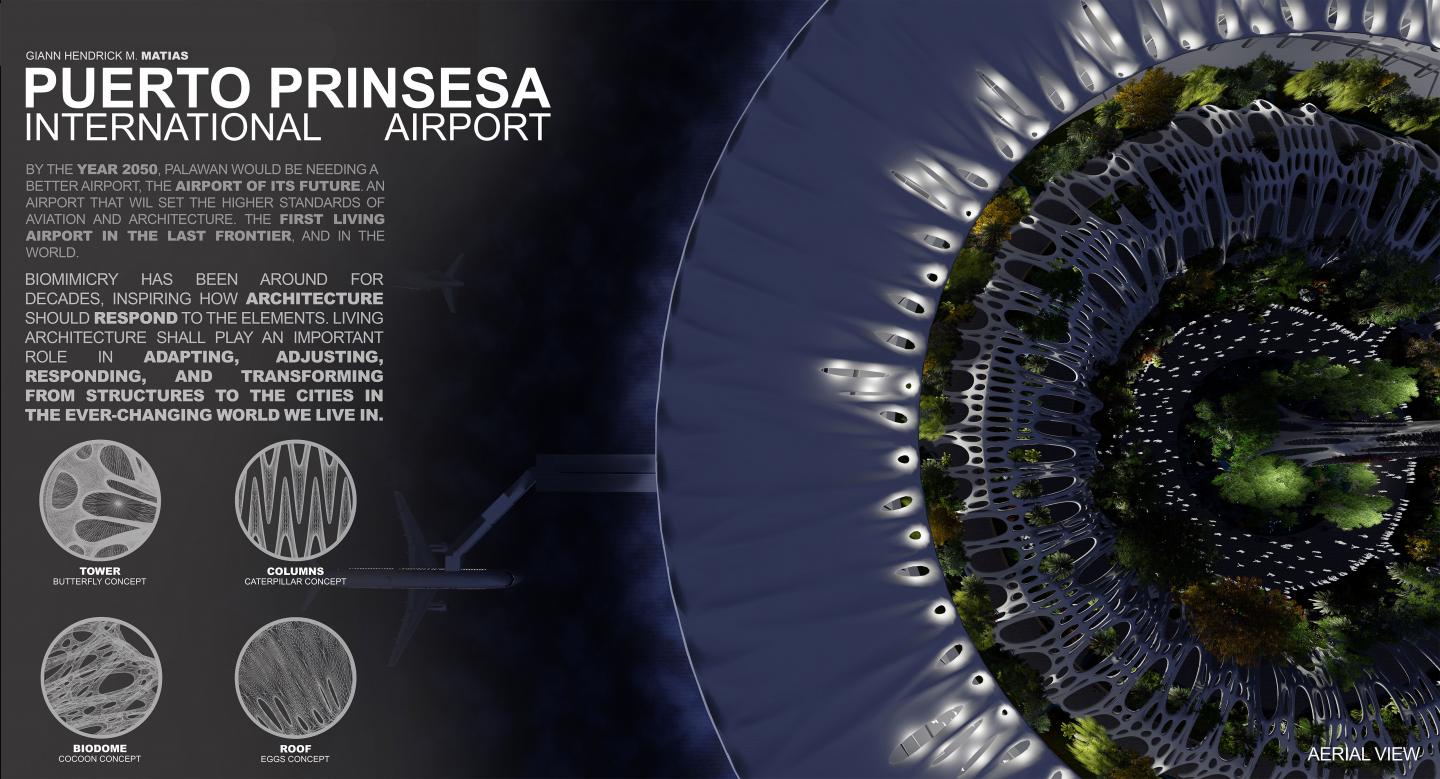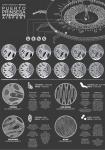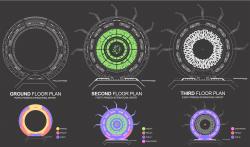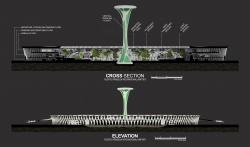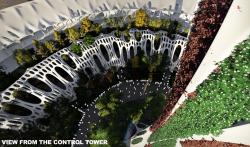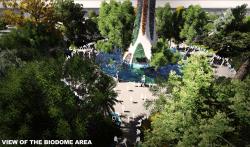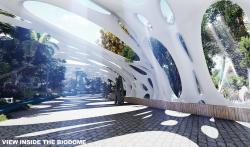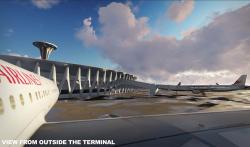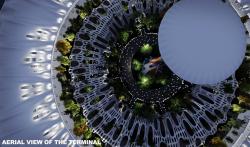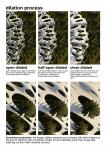Puerto Prinsesa, the capital city of Palawan. Palawan is called the "last frontier" of the Philippines, it is a narrow archipelago made up of 1,700 islands. It is the last ecological frontier of the region for it is home to a vast and rich biodiversity. In the year 2050, Palawan will be needing an advanced and innovative airport to serve its islands and sustain its biodiversity - the airport of its future.
Biomimicry has inspired architects and planners that seeks sustainable solutions to challenges by emulating natures time-tested patterns, strategies, and mechanisms. The butterfly - its anatomy, functions, and very existence, became the inspiration and main source of concepts for the futuristic airport.
A typologically challenging and innovative design of airport architecture. Airport design and planning has remained unchanged for decades. The airport is divided into 3 main components, the outer structure is the terminal, followed by a forest called the Biodome, and lastly the Tower of the airport.
The main feature of the airport is the Biodome, The Biodome is a forest of flora and fauna where people can enjoy, relax, and learn the rich biodiversity of Palawan. The stages in a butterflys life cycle is translated to the design, planning and zoning of the airport. The airport terminal boasts its massive columns circling the airport. The columns mimic the mechanism and anatomy of caterpillars, the resiliency and capability of its anatomy. The landscape design and architecture of the Biodome designed in a radial manner, the location of plants and trees vary depending on how their species are vulnerable in their environments. The tree and plant species which are abundant and most common in the area lines the outer ring of the Biodome, and the vulnerable species lines the smaller inner rings of the Biodome: a very literal representation of the different states and vulnerability of tree and plants species in the area. The Biodome is enclosed by a kinetic dilating envelope which is inspired by the mechanism of the butterfly wings and resilience of its cocoon. The mechanism of how the wings of the butterfly work is translated to a kinetic dilating facade made to respond to environmental conditions within its environment, it appears to be breathing and dilating, similar on how a butterfly expands its wings and its use. The kinetic envelope responds in direct reaction to the sun’s position, allowing indirect sunlight to enter a structure while blocking the strongest rays to prevent glare and heat gain, and allows air to pass through. The aviation Tower is located in the center of the airport, rising above the skyline. The Tower is living structure, with plants crawling up to the top.
The archipelago of Palawan is projected to be an advanced and progressive area in the region. The airport design and architecture aims to protect and be a symbol of the region and its rich biodiversity; the biodiversity that shall be kept unchanged and nurtured. The Puerto Prinsesa International Airport, the First Living airport in the Last Frontier.
2016
2016
Walkthrough:
https://www.youtube.com/watch?v=ViZ3-UwK2Os
https://www.youtube.com/watch?v=wgfquiGWxqk
The scope of this study will be the futuristic design and planning of the Puerto Princesa International Airport. Specifically, will focus on the biomimetic design and approaches that challenges airport planning and design.
The project will focus on architectural design strategies and solutions inspired by the butterfly; moreover, the region of Palawan is rich in butterfly species.
The limit of this study will be in-depth engineering solutions, structural, electrical, plumbing, and sanitary of the airport; moreover, airport logistics and other technical aspects in airport design and planning.
Solo
